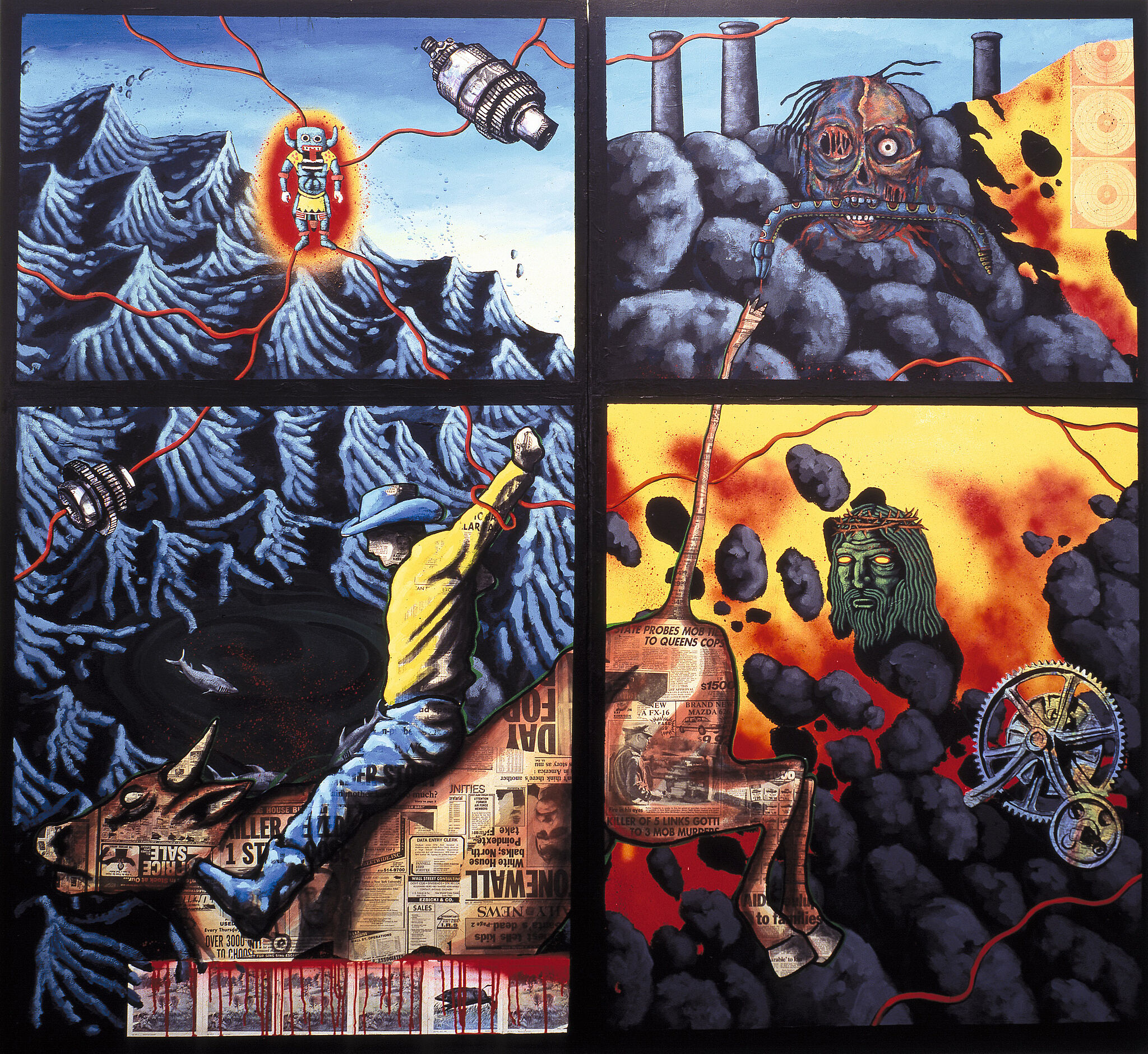David Wojnarowicz: History Keeps Me Awake at Night | Art & Artists
July 13–Sept 30, 2018
David Wojnarowicz: History Keeps Me Awake at Night | Art & Artists
Gallery 5
5
In the mid-1980s Wojnarowicz began to incorporate his disparate signs and symbols into complex paintings. A fierce critic of a society he saw degrading the environment and ostracizing the outsider, Wojnarowicz made compositions that were dense with markers of industrial and colonized life. These include railroad tracks and highways, sprawling cities and factory buildings, maps and currency, nuclear power diagrams and crumbling monuments. Interspersed among them are symbols that he connected to fragility, such as blood cells, animals and insects, and the natural world. Wojnarowicz used these depictions as metaphors for a culture that devalues the lives of those on the periphery of mainstream culture. He made these paintings at a time when AIDS was ravaging New York, particularly the gay community. Although AIDS was first identified in 1981, President Ronald Reagan did not mention it publicly until 1985. By the end of that year, in New York alone there already had been 3,766 AIDS-related deaths.
David Wojnarowicz (1954–1992), The Death of American Spirituality, 1987
The Death of American Spirituality contains a number of Wojnarowicz’s recurring symbols and imagery densely layered in a single composition. With its radically juxtaposed motifs that suggest different temporalities—from geologic landforms to emblems of the American West and the Industrial Revolution—the mythical tableau depicts destruction proliferating alongside technological advancement and geographic conquest.

